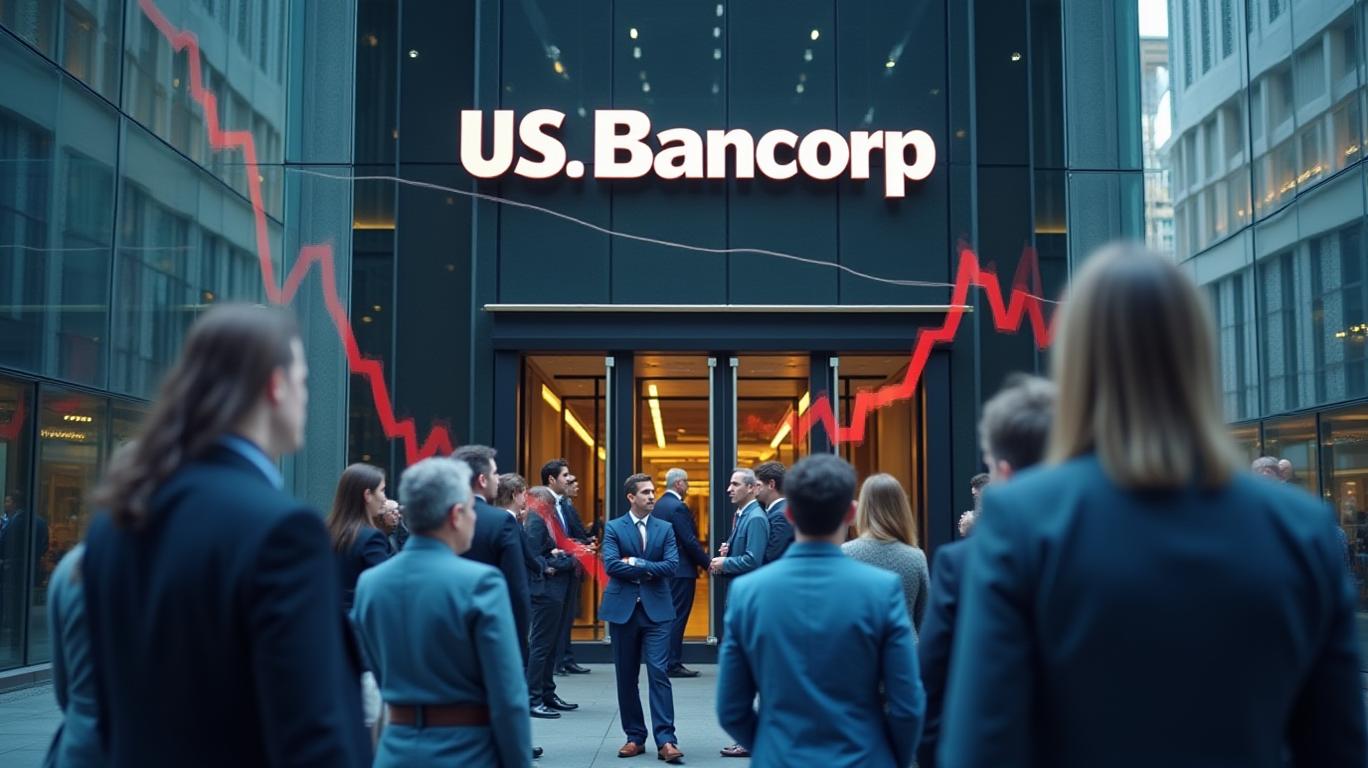Interest Rate Risks Cloud U.S. Bancorp Preferred Shares: A Downgrade to Underweight Signals Caution Ahead
The recent downgrade of U.S. Bancorp’s preferred shares to Underweight by JP Morgan, coupled with broader macroeconomic headwinds, underscores growing concerns about the bank’s vulnerability to rising interest rates. This analysis delves into the factors driving the downgrade, focusing on interest rate exposure, structural risks, and market sentiment.
Ask Aime: "U.S. Bancorp's stock facing uncertainty amid rising rates?"

The Downgrade Context: From Neutral to Underweight
On April 3, 2025, JP Morgan downgraded U.S. Bancorp’s preferred shares (NYSE: USB.PRR) from Neutral to Underweight, citing heightened risks tied to economic slowdowns and sector-specific pressures. The price target was slashed to $43.50 from $51.00, reflecting skepticism about the bank’s ability to navigate rising interest rates and deteriorating loan quality. While other analysts, such as Citi and Wolfe Research, maintained bullish outlooks for the common stock, the preferred shares faced scrutiny due to their structural sensitivity to rate fluctuations.
Key Interest Rate Risks: SOFR Exposure and Dividend Structures
U.S. Bancorp’s preferred shares are exposed to three-month CME Term SOFR, a benchmark that has surged in recent years. For example:
- Series B (USB.H) dividends are set at the higher of SOFR + 0.86% or a 3.50% floor, creating upward pressure on costs if SOFR rises further.
- Series A (USB.A) follows a similar structure, with dividends tied to SOFR + 1.28%, also capped by a 3.50% minimum.
Ask Aime: "Can U.S. Bancorp's preferred shares weather rising interest rates?"
As the Federal Reserve maintains a hawkish stance, SOFR could remain elevated, squeezing the bank’s net interest margin (NIM). Analysts warn that rising funding costs may outpace income from fixed-rate assets, compressing profitability.
Redemption Pressures and Liquidity Concerns
Multiple preferred share series face redemption deadlines in 2026–2027, including Series L (USB.Q) and Series M (USB.R). If interest rates remain high, refinancing these issues could prove costly, forcing U.S. Bancorp to issue new preferred shares at higher yields or absorb liquidity strains. Compounding this risk is the noncumulative dividend structure, which allows the bank to skip payments without penalty—a red flag for income-focused investors.
Institutional Sentiment and ETF Activity
Institutional ownership of USB.PRR fell by 2.29% in early 2025, with key ETFs trimming allocations:
- The iShares Preferred and Income ETF (PFF) reduced holdings by 3.52%, signaling broader market caution.
- Only the Invesco Financial Preferred ETF (PGF) increased its stake, highlighting divergent views on the bank’s financial health.
Broader Credit Downgrade and Fiscal Challenges
S&P Global’s downgrade of U.S. Bancorp’s credit rating to ‘A’ from ‘A+’ in late 2024 reflects heightened systemic risks. While not directly tied to preferred shares, this downgrade raises borrowing costs across the bank’s capital structure, further straining liquidity. The U.S. government’s own fiscal challenges, including interest expenses projected to hit 10% of tax revenue by 2025, amplify macro risks for financial institutions.
The Case for Caution: Why Hold Isn’t Enough
While U.S. Bancorp maintains a 4.65% dividend yield and a 14-year streak of dividend growth, the risks now outweigh the rewards. Key concerns include:
1. SOFR-Linked Dividends: Rising rates could force the bank to divert capital to meet payout obligations.
2. Redemption Clusters: Over $2 billion in preferred shares mature by 2027, requiring costly refinancing in a high-rate environment.
3. Economic Sensitivity: The bank’s exposure to credit card loans and payments businesses leaves it vulnerable to consumer spending declines.
Conclusion: Hold for Now, but Monitor Closely
The downgrade to Underweight (effectively a “Hold” with caution) is justified given the interplay of rising interest rates, redemption pressures, and sector-specific risks. Investors should prioritize dividend stability and liquidity resilience, while keeping a close eye on SOFR trends and U.S. Bancorp’s ability to manage its capital structure.
In summary, U.S. Bancorp’s preferred shares remain a high-risk holding unless rates stabilize or the bank demonstrates stronger financial flexibility. With the Fed’s path uncertain and SOFR near decade highs, patience—and a preference for fixed-rate securities—may be the wisest strategy for income investors.
Data as of April 2025. Past performance does not guarantee future results.










